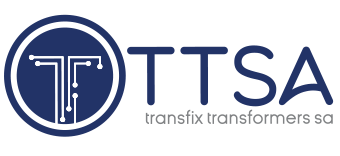South Africa is considering extending the lives of some of its biggest coal-fired power plants as the government seeks to bolster the country’s long-term energy security amid a deepening crisis. Kendal and Lethabo, two plants that represent about fifth of the State-owned power utility’s current capacity, are possible candidates, according to people familiar with the matter. Officials tasked with ending the crisis and making sure it doesn’t recur are looking at all options, the people said, asking not to be identified as the plans aren’t yet public.
The Transnet National Ports Authority (TNPA) has issued a request for proposals (RFP) for a service provider to design, build, test, commission, operate and maintain a 20 MW solar photovoltaic (PV) plant, with a battery energy storage system (BESS), for a period of seven years, at the Port of Richards Bay. “Securing alternative energy capacity forms part of TNPA’s Desired End State strategy that aims to enhance internal capabilities to ensure business continuity across the port system, while increasing business resilience and preserving the environment,” says TNPA renewable energy sector specialist Amanda Makgoga.
Public Enterprises Minister Pravin Gordhan says the restructuring under way at South Africa’s troubled State-owned electricity producer will result in a new-look entity that “will no longer be the old Eskom as we know it” by the end of March next year. Delivering his Budget Vote to lawmakers, Gordhan said the National Transmission Company of South Africa (NTC) would be fully operationalised by November and that the identities of its independent board members would be announced “shortly”.
Power utility Eskom has announced that it will implement Stage 5 loadshedding in the evenings until further notice. Stage 5 loadshedding will be implemented from 16:00 until 05:00 and Stage 4 loadshedding from 05:00 to 16:00 every day.
Telecommunications giant MTN South Africa (SA) has issued two requests for information (RFI’s) for zero carbon renewable wheeling and on-site renewable solutions for various data centres and base transceiver station (BTS) sites across South Africa as the operator works to unlock off-grid, clean and reliable energy alternatives. This as MTN SA aims to gain an edge through renewable energy solutions across its footprint and meet its 2040 Net Zero targets.
Mobile telecoms company Vodacom has approach Eskom with a ‘virtual wheeling platform’ concept that the communications group believes could assist it and other companies with distributed electricity demand profiles to meet their decarbonisation goals, while also contributing to lowering the risk of loadshedding. The proposed solution, an outline of which was presented by CEO Shameel Joosub during the 2023 edition of the South African Investment Conference in April, does not involve any specific new investments by either Eskom, Vodacom or potential participants.
It is critical that government consolidates around the National Electricity Crisis Committee (Necom) plan and delivers on the implementation timelines as they stand now. “Given that there is 3 GW less generation available than during the past winter, it seems certain that South Africa is heading for Stage 8 loadshedding this winter. Business is an eager partner of the plan, ready to work where appropriate to ensure the goals are met, and a sense of progress is the one comfort we should have during the dark days ahead,” says business lobby organisation Business Leadership South Africa (BLSA) CEO Busi Mavuso.
Amid rising public anxiety over the prospect of a blackout, a former senior Eskom executive has added his voice to those highlighting the low probability of such an eventuality. However, he also argues that, given current fears over a grid collapse, the State-owned utility’s well-developed contingency plans should be complemented by a clear country plan for navigating such a scenario. Babcock Ntuthuko Engineering CEO Thava Govender, who spent 29 years at Eskom where he acted as group executive for both generation and transmission, describes as a “myth” arguments that higher stages of loadshedding increase the prospect of a blackout.
Forestry, Fisheries and the Environment Minister Barbara Creecy reports that the department’s environmental impact assessment (EIA) section is currently processing applications for renewable-energy projects with a combined capacity of 9 789 MW. Delivering her Budget Vote on May 19, the Minister said that there were application for 2 899 MW of solar photovoltaic capacity and a further 6 890 MW of wind capacity and added that many of the applications were coupled with battery energy storage systems and associated transmission and distribution infrastructure.
Karpowership, the Turkish company seeking to supply electricity to South Africa, secured government permission to moor its ship-mounted power plants at three of the country’s harbours. A dispute with the port operator may delay or thwart one of the projects. A so-called Section 79 notice granting the consent was issued by the Department of Transport in February, though it wasn’t initially publicly disclosed. The approval surmounted one hurdle the company needs to clear to install its gas-fired plants, after winning three-fifths of a tender for the supply of emergency power in 2021. Transnet National Ports Authority wants to use one of the mooring sites — a location known as A100 at the southern Port of Ngqura — for a liquid bulk terminal it’s relocating from the nearby city of Gqeberha.
INDUSTRY NEWS
WHERE TO FIND US
Address
9 Yellow Street
Botshabelo Industrial Area
Botshabelo, Free State
Call / Email Us
Tel: +27 (0) 61 956 6772
Email: info@transfix.co.za
